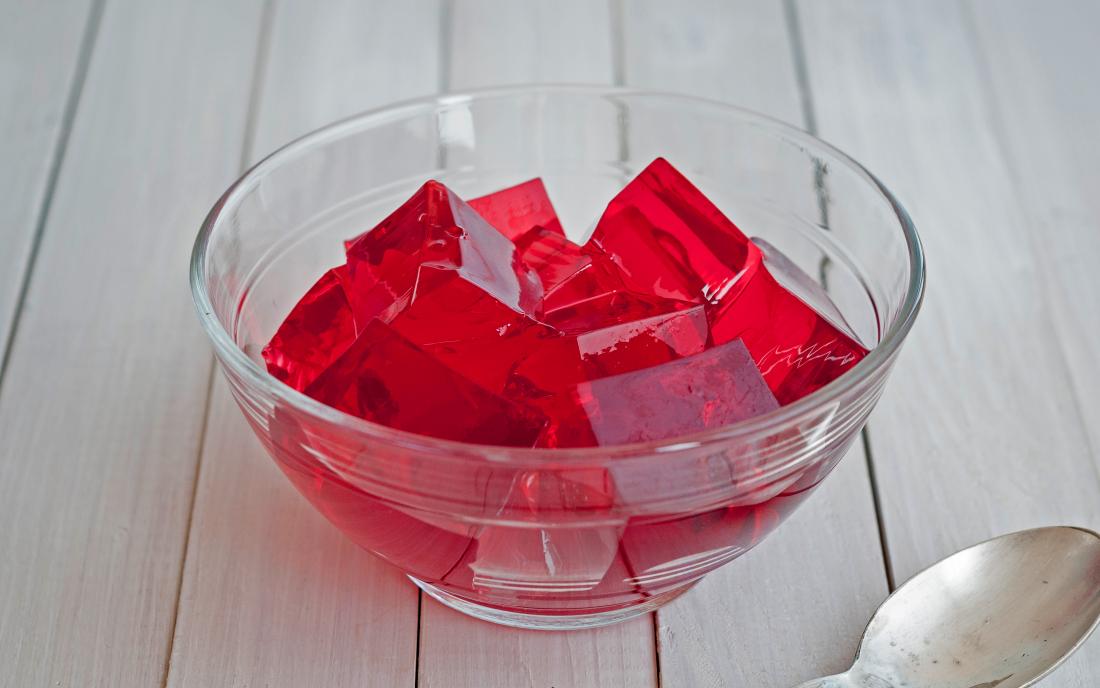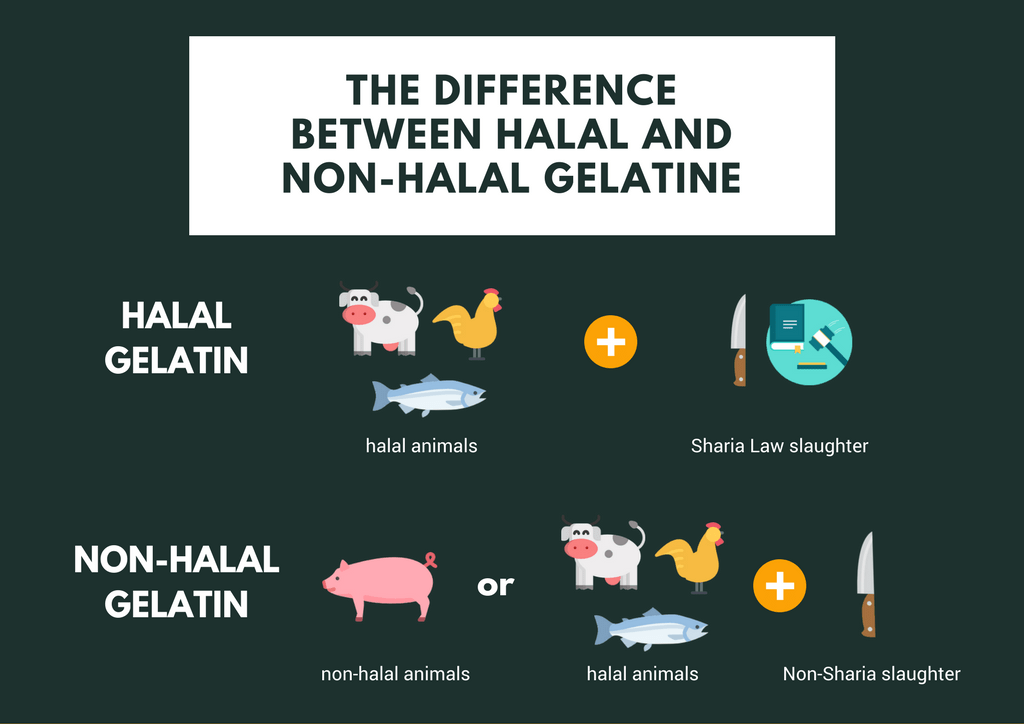Halal Sweets Company Is It Got Beef Gelatine

Most Muslims are familiar with this term and see it from a mile off on a product proclaiming haram! haram! or turn a blind eye. We may ask why gelatine is not halal. In this post, we will examine what gelatine is and whether Muslims can consume it.
If you're not interested in the rationality, then you can skip to the ruling at the bottom.
What is Gelatine?
Gelatine is not naturally occurring, but derived from fibrous protein collagen which can be found in animal skin, bone, sinew and connective tissue.

Gelatine can be bought in sheets, shreds, flakes or coarse powder. It is white or yellowish, has a slight but characteristic odour and taste and is stable in dry air but subject to microbial decomposition if moist or in solution. It is insoluble in cold water but swells and softens when immersed gradually absorbing 5 to 10 times its own mass of water. In hot water, it dissolves to form a thick colloidal mucilage which forms a jelly on cooling.
Edible Gelatine is used throughout the food industry, for example in confectionery, ice-creams, jellies, chocolates, sweets, jams, pastries, desserts, dairy products and the meat industry. It acts as a stabilising and smoothing agent in foods. Gelatine is also used in the manufacture of rubber substitutes, adhesives, cement, lithographic and printing inks, photographic plates and films, matches, sizing papers and textiles.
In its raw form, it is used for the treatment of brittle fingernails and other non-fungal defects. It is also used in the preparation of many pastes, throat pastilles, vaginal pessaries and rectal suppositories. Gelatine is the main ingredient in all hard and flexible capsules. Many older tablet formulations still contain gelatine as a binding agent. The most important value in therapy is as an easily digested adjuvant food-when supplemented, it is very widely used for various forms of malnutrition, gastric hyperacidity and ulcer, convalescence and general diets of the sick.
How it's made
Generally, skin or bones are used to make gelatine. Let's look at the process for Bones, to begin with.
Gelatine from Bones
Simmer the Bones
The bones are placed in a large pot with twice their weight of cold water, for example, 10 lbs. of bones means 5 gallons of water. The water is brought to a simmer and you will see the proteins on the bones coagulate, they will rise to the surface as a grey-brown film. They will be skimmed off regularly until no more rises to the surface. The Bones need to be further simmered for six to eight hours. The bones should be kept submerged in the water throughout.
Reduce the Liquid
The bones are removed and the liquid is strained through several layers of cheesecloth to remove any solids and any fat floating on the surface is also skimmed.
The liquid is then to be boiled at low temperature in a new pot until it is reduced to half. Then transferred to a smaller pot and simmered till it is reduced by half again. This is then repeated again and again until the quantity of liquid is 1/16th of its original volume. You can see the gelatin is to be extremely concentrated.

Congeal the Reduced Liquid
The liquid is then refrigerated in a sterile sealer jar with an airtight lid. The liquid will congeal to a thick, rubbery consistency with a mild meat flavour. It is then ready to use.
Gelatine from Skin
Raw Material
Raw materials intended for medicinal use and food production are generally skin and bone of pig or calf. Some use animal tendons, ligaments, cartilages and hooves. In the case of animal hides (skin), the prime source of gelatine, leather tanneries wash them in lime solution and chemicals are added to dissolve the hair from the surface. The hides are then sent through various machines which remove traces of meat from underneath the hide and then split the hide horizontally into a number of thin sheets. The top sheets are used in leather production as it has the grain pattern on the surface whilst the bottom layers, known as split hides, are used in gelatine production.
Chemical Treatment
Animal hides (skin) are preserved in lime solution [pH 13-14]. The hides are chopped into pieces 6-8 inches in size and allowed to soak in a caustic soda solution. Approximately 1% strength is used, reducing a little in the warm summer months. The soak in caustic soda lasts about 2-3 weeks which has the effect of breaking down [denaturing] the protein, enabling it to be extracted into hot water.
Washing
Following the soak, the hide pieces are pumped into special washing equipment. Acid is added to acidify the hides [pH 1.5-2.0] and then washed to remove impurities and salts for 8 hours.
Extraction
The washed hide pieces are pumped into large extraction tanks where hot water is added and temperature maintained at about 50c. The hides break down slowly in the slightly acid solution [pH 3.0-3.5] to form gelatine. This is drained off once at certain strengths and then fresh hot water is added at a higher temperature to give another extraction. 3 further extractions are made, producing gelatines of different physical properties, [e.g. setting strength and viscosity].
Purification
The gelatine solution drained from the heated hide pieces is then purified. The first stage is filtration and the final stage is through a 2-micron filter to give a solution of high clarity. The gelatine is then de-ionised in order to remove excess salts not removed during washing.
Evaporation
Following purification, the gelatine solution is evaporated in large vacuum evaporators to a strength of about 30%.
Sterilization
Before drying, the Gelatine is sterilized to remove all bacteria. The conditions used are standard in the Food industry – 140c at 4 seconds minimum.
Drying
The Gelatine solution is chilled to make it set and then placed in a drying tunnel for 2-3 hours. It leaves the tunnel dry and is broken into granules for storage purposes.

The Islamic Ruling
There are four primary sources of gelatine; animals, fish, plants or synthetically produced.
If gelatine is derived from fish, plants or made synthetically then it is Halal.
However the majority of gelatine comes from pork (pork is cheaper and tastier) and beef so unless stated clearly, we usually assume the gelatine comes from these sources (in non-Muslim countries).
Gelatine from pork is haram in all circumstances.
If Gelatine from beef (or any other halal animal) is from a halal slaughtered animal, then the Gelatine is halal.
This leaves us with the question of Gelatine from non-halal slaughtered beef (or other halal animals).
Non-halal slaughtered animals are haram to consume, the meat and its constituents like bones are considered impure. The questions is, does an impure thing become pure if its state changes or will it remain be impure. In Arabic this is called Istihaala.

Istihaala
Imams Shafi', Maliki and Hanbali held that once something is impure then it is always impure, whereas the Hanafi's say, if the state has changed, then the impure can become pure. We can now chemically analyse substances at a much lower level, and it is clear that substances can be changed. The classic example is Grape > Wine > Vinegar. Vinegar is fermented alcohol, and we know alcohol is impure. But in a hadith, the Prophet Peace be Upon Him praises Vinegar as being a good condiment. As a result of a new understanding of substances, the Shafi' School now accept Istihaala.
Does Gelatine go through Istihaala?
Modern scholars and chemists agree that gelatine does not go through a process of Istihaala, or if it doesn't, it is only partial. The creation of gelatine is a transfer from the bones to another substance that can be used. It is still possible to identify where the gelatine came from.
Therefore Gelatine is haram.
Gelatine in Medicine
Gelatine in medication will only be permissible if it is necessary for the individual and there is no alternative available. Every individual should strive to find an Islamic alternative though.

The Hanafi jurist, Imam al-Haskafi (Allah have Mercy on him) says: "The Scholars differed regarding the usage of haram medication. The apparent opinion in the (Hanafi) school is that it is haram. However, it is said that it will be permissible when the medicine is known to be effective and there is no other alternative, just as there is a dispensation in drinking alcohol for a person dying of thirst, and the fatwa is given on this opinion." (Durr al-Mukhtar, 1/210)
pepperthatheriams.blogspot.com
Source: https://thehalallife.co.uk/gelatine-in-islam/
0 Response to "Halal Sweets Company Is It Got Beef Gelatine"
Post a Comment